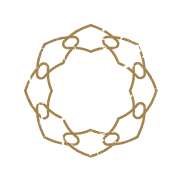Progression Regression - Be Smarter
If at first you don’t succeed, try and try again. That’s the mantra, but think about it—does it make sense to keep doing something over and over again expecting different results? Definition of insanity and all that.
It’s a mistake we all make.
The key to progressing in the gym—whether it’s getting stronger, more mobile, or building coordination—is finding the right entry point. The level at which you can feel the movement best. The level where you can engage muscles the most.
To do this, we use something called the Progression/Regression Model. Think of teaching a kid to ride a bike: we use training wheels, run alongside them, and build their confidence. We introduce them to the movement pattern, the sequencing, and the muscles involved. We start with a regressed version of the full movement so they can actually learn. Otherwise, we’re just watching them fall over again and again. Eventually, they’ll lose patience and assume they’re just not meant to ride bikes.
Why would they keep trying if they’re only going to fall?
At Uptown Movement, every movement has a starting point tailored to your level. Take the pull-up, for example:
The pull-up is a full-body movement that starts with depression of the shoulder blades, engaging the big muscles of your back to pull your body upward. As the shoulder blades glide together, the arms move closer to the body, and the elbows flex. But here’s the thing—those elbow-flexing muscles (biceps, forearms) are way smaller than the lats. If we don’t train the sequencing properly, we’ll never unlock the full strength potential of the movement.
So, what’s the first step?
If I can’t hang for 60 seconds, I probably don’t have the grip, shoulder, and forearm strength to do a pull-up. That’s step one.
Next, I need to learn to control my shoulder blades. If I can’t do an active-passive hang, I won’t be able to properly engage my back muscles to pull myself up. From there, we follow a process, checking off levels as we go—allowing time to feel the muscles, understand the movement, and build long-lasting tendon strength that prevents injury.
The Pull-Up is the Goal. Don’t Train the Goal—Train the Process. Which progression are you on? How many reps do you have? Are they clean?
Look at the Arch Hang, an exercise we’ve just introduced into our programming. It’s great for teaching scapular depression and activating the lats before the biceps take over.
Goals of the Movement:
Develop strength with straight arms
Teach the body to engage the lats before the biceps
But before jumping into the Arch Hang, ask yourself:
Can I hang for 60 seconds?
Can I move my shoulder blades while holding my arms rigid?
If not, which progression should I start with instead?
Skipping the right entry point leads to compensation, which results in:
Elevated shoulder blades (using the traps instead of the lats)
Bending the arms first (engaging the biceps too soon)
Reinforcing the opposite movement pattern of what we actually want
Moral of the Story: Be Smarter.
The goal of training is to stimulate muscles and movement patterns. A nice byproduct? Doing cool things like pull-ups. But the more time you waste failing at the final movement instead of finding your stimulus entry point, the more likely you are to get disheartened and quit.
Progress to regress. Train the process. Build real strength.

